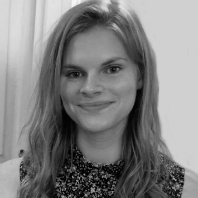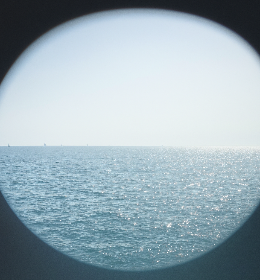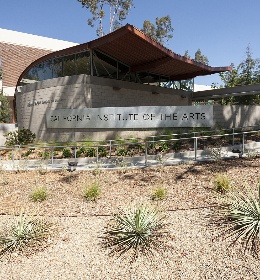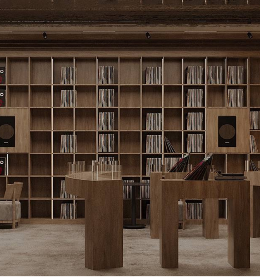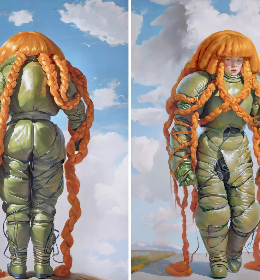Free to the public, the Summit will likely bring in over 300,000 visitors, using visual arts and architecture as a springboard for the discussion of alternative futures. This next edition, again overseen by Chief Curator Diana Campbell Betancourt, will revolve around the theme “Seismic Movements”. Under this umbrella come Geological Movements, Colonial Movements, Independence Movements, Spatial Movements and Social Movements & Feminist Futures, all provoking a reconsideration of (art) histories, borders and fault lines, to ask “what is a movement and how do we generate one outside the confines of an exhibition?”
In addition to the immersive exhibition, the Summit will feature a film programme curated by the Otolith Group, a school and arts mediation program, and the fifth edition of the Samdani Art Award for emerging artists, creating the opportunity to create new work through a supported artist residency, as part of the Summit’s developmental commitment to the local arts community.
Shortlisted artists for the Award this year are: Ariful Kabir, Ashfika Rahman, Faiham Ebna Sharif, Habiba Nowrose, Najmun Nahar Keya, Palash Bhattacharjee, Promoti Hossain, Soma Surovi Jannat, Sounak Das, Sumana Akter, Tahia Farhin Haque, and Zihan Karim.
So, amongst the participating artists, who will we be keeping an eye out for?
Kapwani Kiwanga

Kapwani Kiwanga, Flowers for Africa (ongoing) - photo Aurélien Mole |© Kapwani Kiwanga, courtesy of Galerie Jérôme Poggi
Basing her work on archival imagery relating to African independence, Kapwani Kiwanga consults with florists to recreate the flower arrangements found within the photographs. The flowers run the course of their transient life cycle before wilting and drying, reflecting the enthusiasm for independence which is eventually “eclipsed by the everyday difficulties of the average African citizens” (Kiwanga).
Otobong Nkanga
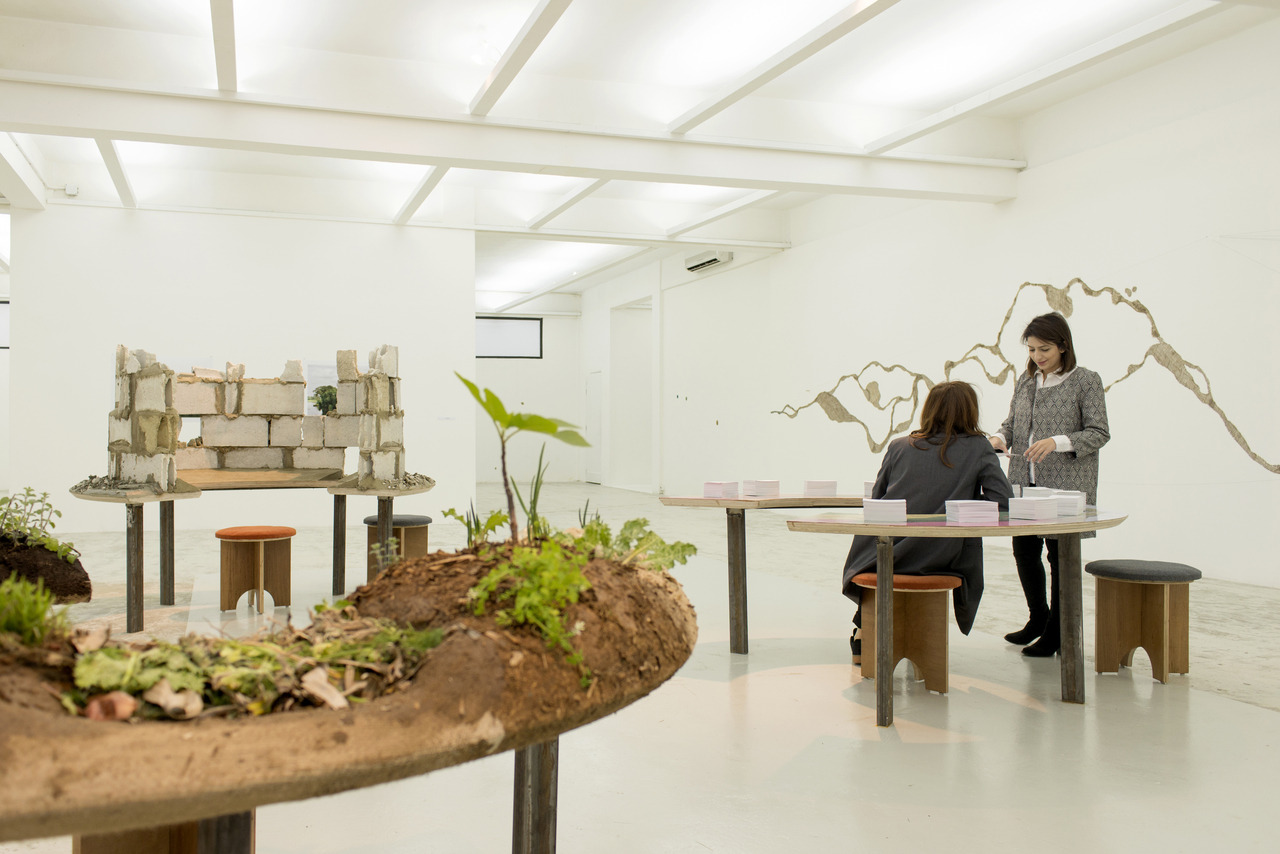
Otobong Nkanga, ‘Landversation’, (2016, Beirut, Lebanon), site specific installation and conversations, various materials, variable dimensions. Installation view with visitors. Photograph by_ Walid Rashid. Courtesy of the artist and Bei
After iterations in Brazil, Lebanon and China, Otobong Nkanga is bringing her Landversation project to Bangladesh. Through a month-long residency in Dhaka, she will “interrogate the complex relationship between the human subject and land, dealing with the contradictory ways in which we inhabit the world and are dependent on it.”
Adrián Villar Rojas
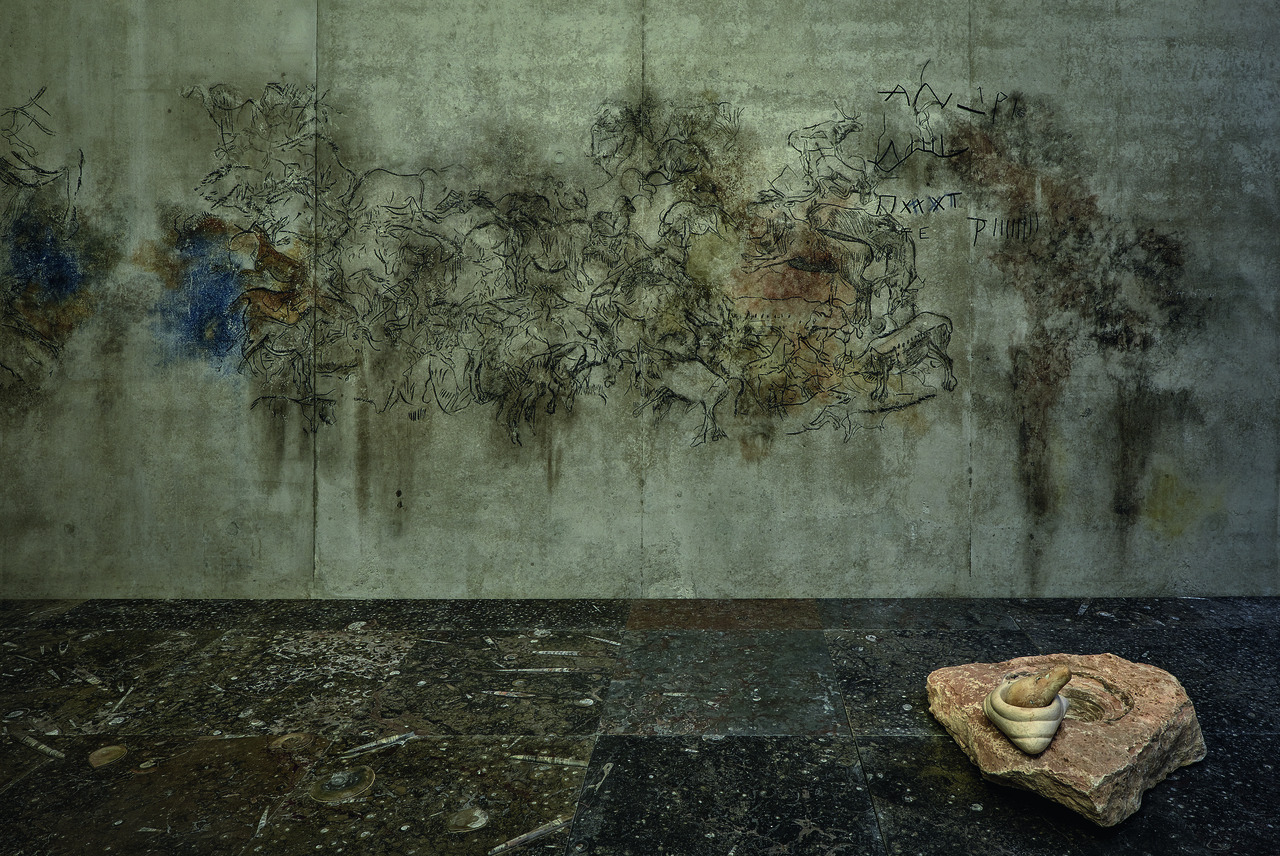
Adrian Villar Rojas,The Theater of Disappearance (2017). Floor tiles and blocks of brown marble with incrustations of Ammonites and Orthocer fossils, paintings and drawings on walls and ivies and tinted artificial light on glass ceiling.
In the heart of the Shilpakala Academy, Adrian Villar Rojas will present his immersive installation featuring now extinct species of undersea creatures. Visitors will walk amongst the 400-million-year-old ammonite and orthoceras fossils, which thrived across the Panthalassa super-ocean for 300 million years, witnessing the creation and eventual breakup of Pangea. Once underwater, these fossils are now present in the Himalayas, as the work invites us to think of our past, present and future on this planet outside of human-bound time.
Taloi Havini
In collaboration with Artspace Sydney, Taloi Havini is using traditional weaving techniques from her community in Bougainville to create a monumental meeting place at the centre of the summit. This newly commissioned space will invite visitors to consider personal and political narratives around place, protection and resilience - crucial in an age where communities across the globe find themselves at the crux of environmental and social change.
In addition to the more established names, over 40 collectives and collaborative platforms will be involved, deeply rooting the Summit in its local context to support, promote and highlight the Bangladeshi contemporary art at its core. They include: Akaliko (Dhaka), Aman Iwan (Paris), Art Labor (Ho Chi Minh City), ArtPro (Dhaka), Artree Nepal (Kathmandu), Back Art (Dhaka), Bangladesh Garment Sromik Samhati (Dhaka), Britto Art Trust (Dhaka), Calpulli Tecalco (Milpa Alta), Center for Historical Reenactments (Johannesburg), Charupith (Jessore), Chimurenga (Cape Town), Depth of Field (DOF) (Lagos), Drik/Chobi Mela/Pathshala (Dhaka), Gidree Bawlee Foundation of Arts (Thakurgaon and Dhaka), Green Papaya (Manila), Gudskul (ruangrupa, Serrum and Grafis Huru Hara) (Jakarta), Hill Artist Group (Chittagong), Hong Kong Artist Union (Hong Kong), Invisible Borders (Lagos), Jatiwangi Art Factory (Majalengka), Jog Art Space (Chittagong), Jothashilpa (Dhaka), Laboratoire Agit'Art (Dakar), Mata Aho Collective (Aotearoa), Pangrok Sulap (Sabah), Shako (Dhaka), Shelter Promotion Council (Kolkata), Shoni Mongol Adda (Dhaka), Students' Educational and Cultural Movement of Ladakh SECMOL (Leh), The Otolith Group (London), Trovoa (Rio de Janeiro), Ueinzz Theatre Group (São Paulo), Uronto Artist Community (Dhaka).

© Jatiwangi Art Factory
For more information, see the Dhaka Art Summit’s website.



